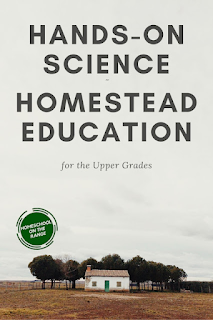We recently had the opportunity to try out Ameo Life's line of products, including the silver solution, silver soap, silver gel, and multivitamins. Silver is a pretty trendy in the all-natural community, and Ameo Life approaches health, particularly skin health, through the digestive system. Their basis for products is that a healthy gut flora and healthy digestive system will promote better outer health.
Of the four products we received, hands-down our family favorite was the Extra Strength Silver Gel! This gel is formulated to balance the skin's pH level. It is infused with silver, and designed to leave the skin feeling refreshed and rejuvenated.
Every family member used this for various skin irritations - primarily poison oak and chigger bites - and found it to be quite effective. It didn't eliminate the problems, but cut down significantly on the inflammation and itching. Mom also used it as a daily facial moisturizer and found it to be light and refreshing for these hot summer days. See the photo below comparing one arm treated with gel and the other without gel. (The one treated was actually the worse of the two.)


 The organic silver soap was lavender-scented and very pleasing to smell, particularly in the evening. It got the job done, of cleaning, and left our skin feeling refreshed. This, too, helped with itchy summer ailments. It is infused with both silver and essential oils for a natural cleanse.
The organic silver soap was lavender-scented and very pleasing to smell, particularly in the evening. It got the job done, of cleaning, and left our skin feeling refreshed. This, too, helped with itchy summer ailments. It is infused with both silver and essential oils for a natural cleanse.
The Alkaline Silver Solution is designed to be used internally, but we chose to use it externally for conditions such as swimmers ear. I do recommend that people read the FAQ at the bottom of this page to be informed prior to internal use. The silver solution is designed to support a healthy immune system and naturally cleanse the gut. These same principles work toward cleaning the ear canal from bacterial growth after a swim in the pond!
Finally, the chelated multivitamin is packed with essential vitamins, minerals, and antioxidants to support your health naturally. It also has methylated folate to make it more bioavailable. One of the challenges facing multivitamin supplements is absorption and bioavailability, and many are formulated with the least expensive forms of vitamins in mind, however there is little benefit to taking vitamins your body can’t utilize. The ingredients used in these are designed to be more bioavailable, hence a more economical product in the long run.
Want to try Ameo Life? Enter to win 4 full-sized products!!!
 With Charleston as a beautiful backdrop, Patriots Point is home to three museum ships: the USS Yorktown, an aircraft carrier, the USS Laffey, a destroyer, and the USS Clamagore, a submarine that was sunk as an artificial reef. It is also the starting point for tours of Fort Sumter, which was the site of the first shots fired in the American Civil War. (Find more on the Civil War here.) The floating museum gives visitors the chance to tour the aircraft carrier, USS Yorktown, along with a destroyer ship, and a submarine.
With Charleston as a beautiful backdrop, Patriots Point is home to three museum ships: the USS Yorktown, an aircraft carrier, the USS Laffey, a destroyer, and the USS Clamagore, a submarine that was sunk as an artificial reef. It is also the starting point for tours of Fort Sumter, which was the site of the first shots fired in the American Civil War. (Find more on the Civil War here.) The floating museum gives visitors the chance to tour the aircraft carrier, USS Yorktown, along with a destroyer ship, and a submarine. 














.jpg)














.jpg)





.jpg)



.jpg)

